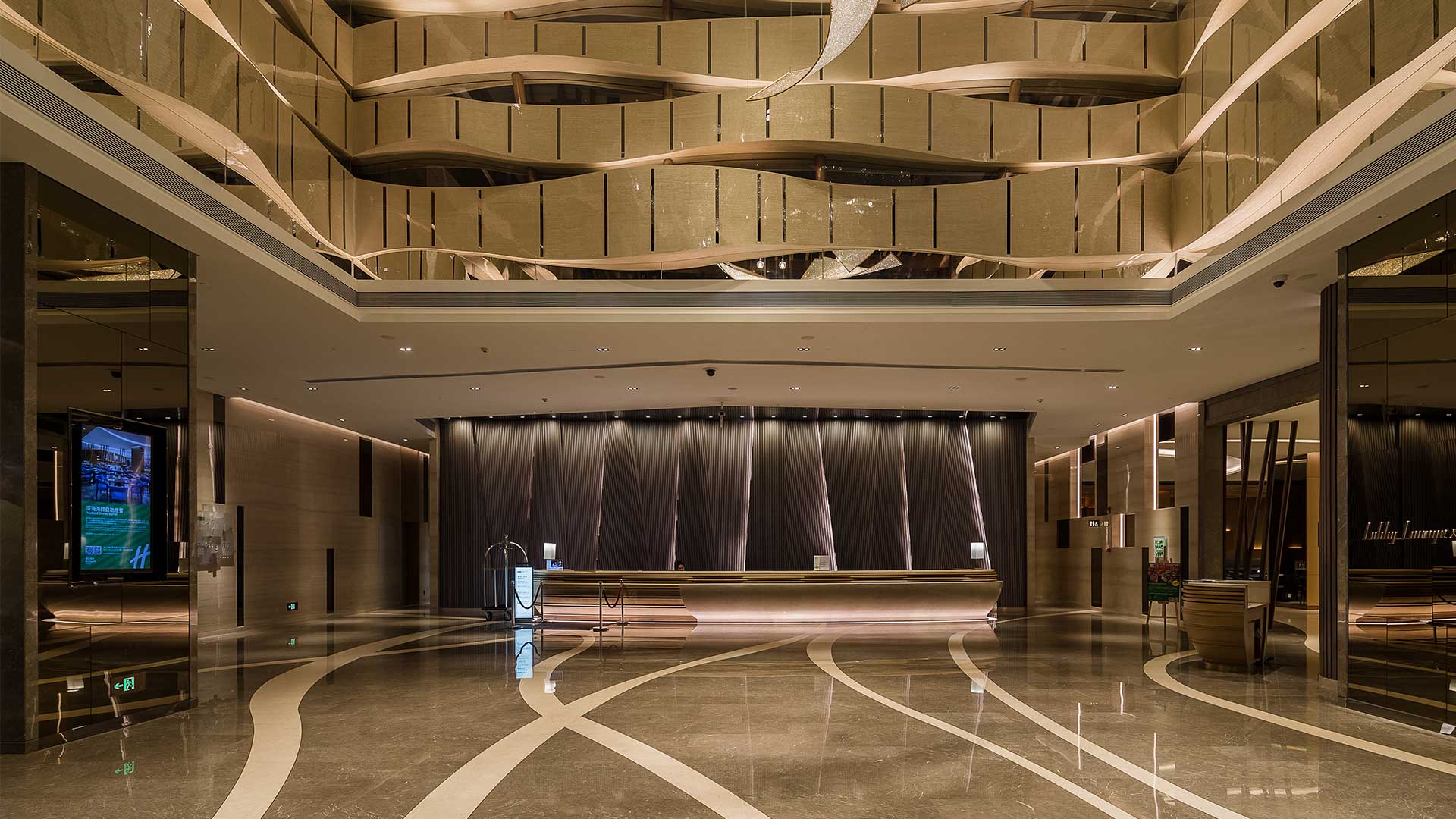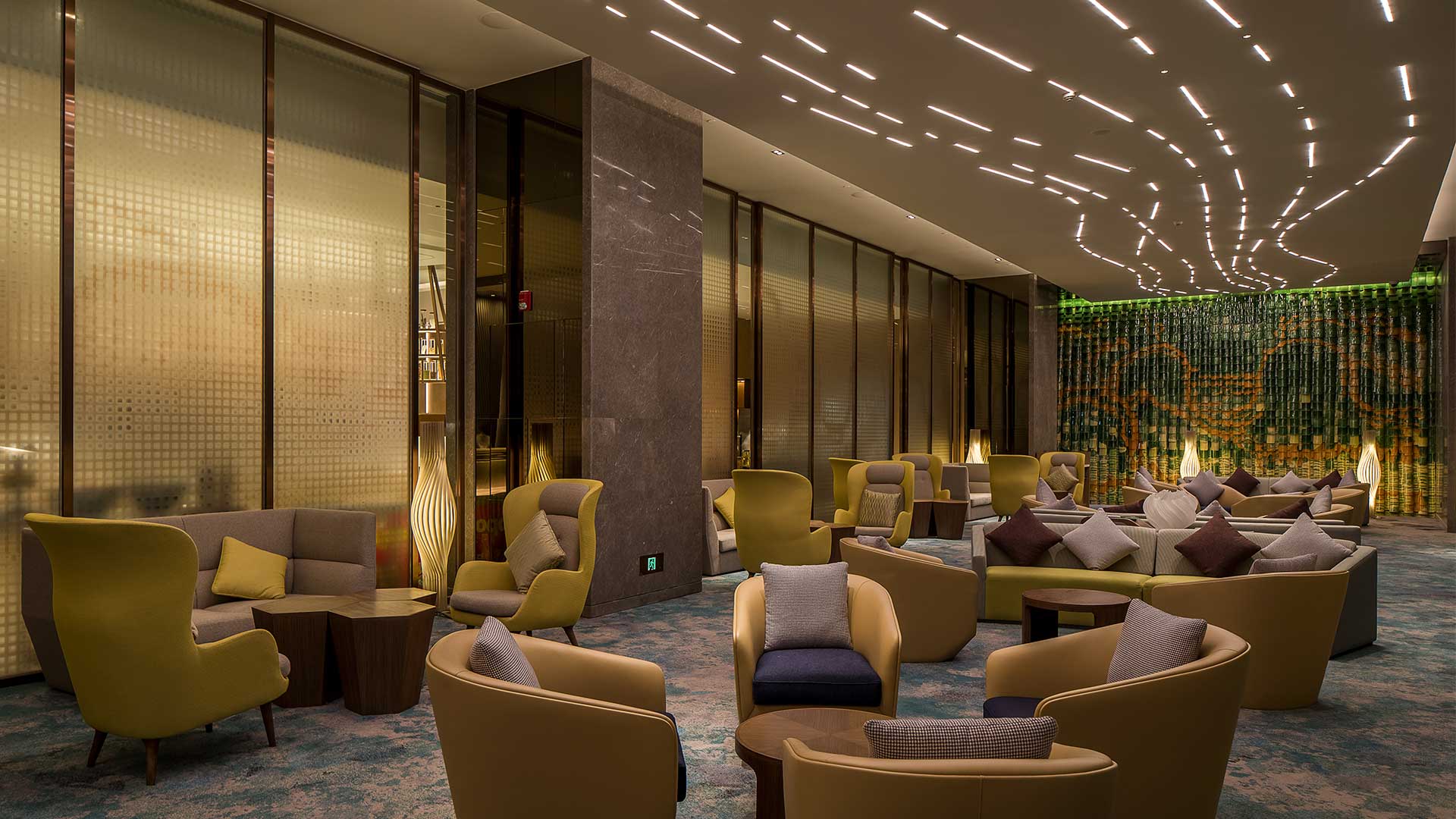- Share:
It is well known that hospitality lighting design is to create light environment by utilizing all characteristics of light and giving full play to the artistic role of lighting. In the overall design of hospitality lighting, the hotel lobby part plays an important role. AERO will explore with you how to deal with the details of hotel lobby lighting design.

1. Hotel lobby lighting: set off the space with ambient light
Light environment of the lobby is important to a hotel. The ambiance of its light environment influences every customer's first impression and represents the status and image of the hotel. The lighting design for this area is usually combined with traditional lighting, adopting vertical or top-down lighting; a better technique is to "borrow light", showing the features of the hotel lobby with light and setting off the space with ambient light, or to design hollowed-out ceiling to render the needed atmosphere with the help of light.
2. Hotel reception lighting: solve the glare problem and create a soft environment
For hotel reception lighting design, the image of the reception staff needs highlighting, in two aspects particularly. First, the floor of the hotel. Now the floor of many hotels adopts high-reflective material, which means the dazzling reflection of light on the floor, so we should keep it out of our design. Second, glare should be avoided in hotel reception lighting to make the refracted light soft, the light environment warm, the point of which is to create a good environment for the communication between customers and the receptionists.
3. Lounge lighting: coordinate with environment and accessories with soft light
The lounge is where guests relax and wait, so it should not only satisfy customers' need of a short rest and stay, but also take care of their mood. Modern lounge lighting should marry functionality with artistry, which means moderate brightness, layered illumination, and a focus on the integration of decoration style and the light. The matching of light color temperature with curtains, carpets and other soft fittings should also be taken into consideration, as well as the height of lighting fixtures and the adoption of products with the color temperature of 2700k-3000k.

4. Hotel transition space lighting: different lighting methods for different areas
(1) Lobby aisle lighting: enhance the frontal sense for a better design effect
The aisle serves as a transitional space whose design effect is to emphasize the frontal sense. The first key is to highlight the effect by combining a variety of lighting methods to adjust the light projection method for a light decoration effect. The second is to apply the light source evenly. The light should be soft without glare, neither too bright nor dim.
(2) Elevator hall lighting: fully consider material permeability
The lighting design of the elevator hall should present the crystal texture of the space, which is very simple and common in elevator hall lighting design. It is necessary to fully consider the transparency of the glass and take care of the glare problem. Particular illumination is also optional for important ornaments.
(3) Corridor lighting: the better translucency of "cove lighting"
In the design of hotel lighting, the ceiling is the key of the corridor. A corridor that is too long and too straight will make it easier for the luminaire to get in sight. Therefore, hotel corridor lighting mainly adopts architectural lighting, luminous light troughs or embedded downlights, for the lighting effect of "Visible lighting, but unnoticeable light fixture", which is a common lighting method.
Luxury hotels have stricter requirements on lighting. Good hotel lighting is a product of not only the design but also the selection of luminaire and the cooperation during construction. Otherwise, any design, however good, is futile without materialization. With its strong R&D capabilities, complete product chain, high productivity and professional on-site service capabilities, Aero Light can ensure the hotel lighting effects its products are designed for.














